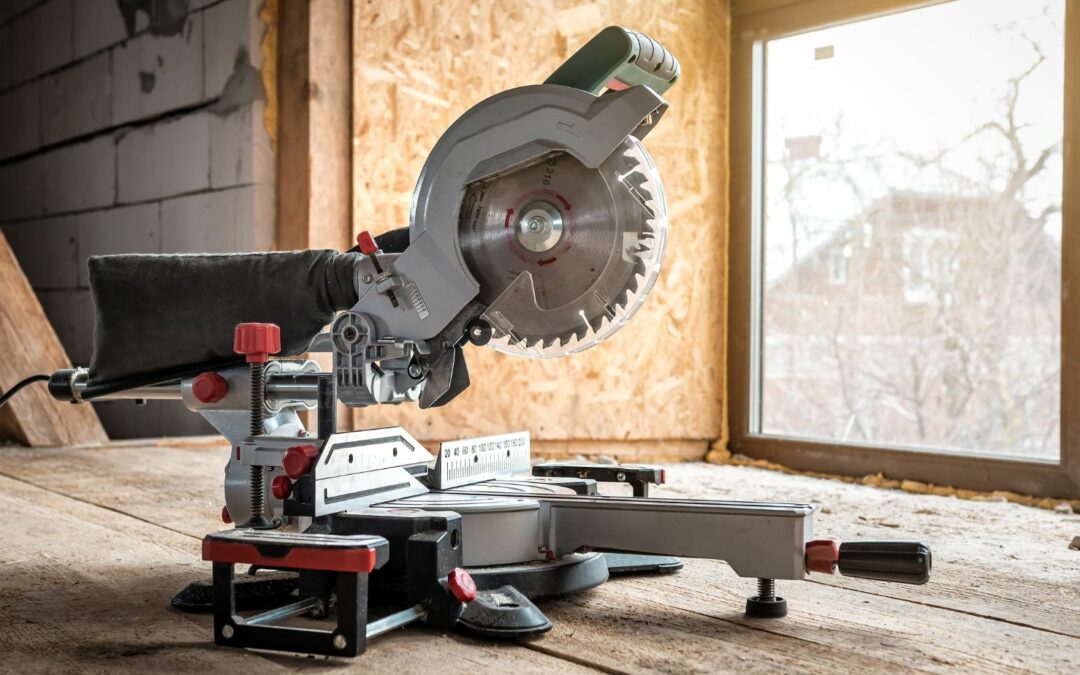Crosscutting with a Table Saw Involves Cutting the Wood
Crosscutting with a table saw involves cutting the wood at an angle perpendicular to the grain, resulting in clean and precise cuts. When it comes to crosscutting, there are several tips that can help ensure accurate and safe results.
Firstly, it’s crucial to use a miter gauge or sled to guide the wood through the blade. This provides stability and helps maintain a straight cut. Additionally, setting up a stop block can be beneficial for making repetitive cuts of the same length.
Another important aspect is selecting the right blade for your crosscutting needs. A fine-toothed crosscut blade with around 60-80 teeth is ideal for achieving smooth cuts without splintering or tear-out on the wood surface.
Lastly, maintaining proper safety measures is paramount when using a table saw. Wearing protective gear such as safety glasses and hearing protection is essential. Furthermore, always ensure that the wood is properly secured before initiating any cuts.
By following these tips and practicing proper technique, you’ll be able to master crosscutting with a table saw effectively while achieving professional-quality results.
Understanding Cross Cutting with a Table Saw
When it comes to woodworking, crosscutting is an essential technique that involves cutting wood across the grain. It’s a fundamental skill that every woodworker should master, as it allows for precise and accurate cuts in various projects. In this section, we’ll delve into the art of cross cutting with a table saw and explore some tips to enhance your woodworking skills.
One of the key advantages of using a table saw for crosscutting is its stability and precision. The flat surface of the table provides excellent support for the workpiece, ensuring straight and clean cuts. Additionally, most table saws come equipped with miter gauges or sleds that allow for controlled movement during crosscuts, further enhancing accuracy.
Choosing the Right Blade for Crosscutting
When it comes to crosscutting with a table saw, selecting the right blade is crucial for achieving clean and accurate cuts. With so many options available, it can be overwhelming to determine which blade is best suited for your specific project. In this section, I’ll provide you with some valuable tips on choosing the right blade for crosscutting.
- Consider Tooth Count: The number of teeth on a saw blade plays a significant role in the quality of your crosscuts. Blades with more teeth produce smoother finishes, while blades with fewer teeth are better suited for faster cuts in thicker materials. For general-purpose crosscutting, a blade with around 40-60 teeth should suffice.
- Opt for High-quality Carbide Tips: Look for blades that feature high-quality carbide tips. Carbide-tipped blades are known for their durability and ability to maintain sharpness over extended periods. These blades are designed to withstand the demands of cutting through various hardwoods and engineered lumber.
- Pay Attention to Hook Angle: The hook angle refers to the angle at which the tooth approaches the material being cut. A positive hook angle (greater than 0 degrees) provides aggressive cutting action but may also result in more tear-out along the cut edge. A negative hook angle (less than 0 degrees) reduces tear-out but requires more power from your table saw motor.
- Choose a Blade Width Suitable for Your Saw: It’s essential to select a blade width that’s compatible with your table saw’s arbor size and maximum cutting capacity. Using an inappropriate-sized blade can lead to instability during cutting or even damage your equipment.
- Take into Account Blade Thickness: Thicker blades tend to absorb more vibrations, resulting in smoother cuts and reduced noise levels. Additionally, thin kerf blades remove less material during each cut, optimizing efficiency and reducing waste.

Setting Up Your Table Saw for Crosscutting
When it comes to crosscutting with a table saw, proper setup is crucial for achieving accurate and safe cuts. Here are some essential tips to help you get your table saw ready for crosscutting:
- CHECK YOUR FENCE ALIGNMENT: Before starting any cutting operation, ensure that your table saw’s fence is properly aligned parallel to the blade. Use a reliable measuring tool like a dial indicator or precision square to make sure there is no deviation. Adjust the fence if necessary to maintain an even distance from the blade along its entire length.
- POSITION YOUR MITER GAUGE: The miter gauge allows you to guide the workpiece through the cut accurately. Ensure that it slides smoothly in the miter slot without any wobbling or play. Tighten any adjustment screws or knobs as needed to secure it firmly in place.
- USE A CROSSCUT SLED: Consider using a crosscut sled, especially when making repetitive or precise cuts. A sled provides added stability and control by supporting both sides of the workpiece during the cut, minimizing the risk of kickback and ensuring cleaner results.
- ADJUST THE BLADE HEIGHT AND ANGLE: Set your blade height slightly higher than the thickness of your workpiece for clean and efficient cuts. Additionally, adjust the blade angle if you require angled crosscuts, such as when creating miter joints or bevels.
- INSTALL A ZERO-CLEARANCE INSERT: Replace your standard throat plate with a zero-clearance insert specifically designed for crosscutting operations. This helps prevent tearout by providing solid support right up to where the blade exits through the wood fibers.









